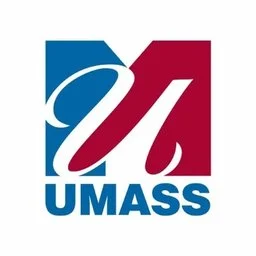NURS 6052 Discussion: Searching Databases Example 1 – Infection Control in Healthcare Settings PICO(T) Question: In healthcare settings (P), does implementing a comprehensive hand hygiene program (I) compared to standard hand hygiene practices (C) reduce the incidence of nosocomial infections (O) within 12 months (T)?
NURS 6052 Discussion: Searching Databases Example 1 – Infection Control in Healthcare Settings
PICO(T) Question: In healthcare settings (P), does implementing a comprehensive hand hygiene program (I) compared to standard hand hygiene practices (C) reduce the incidence of nosocomial infections (O) within 12 months (T)?
Read MoreNURS 6051 Discussion: The Inclusion of Nurses in the Systems Development Life Cycle Sample 2
NURS 6051 Discussion: The Inclusion of Nurses in the Systems Development Life Cycle Sample 2
I agree with the tour statement that nurses can benefit from implementing health information systems that improve patient care. Having the knowledge and nurses’ involvement in the systems development life cycle can influence the health systems design and development of systems, which increases patient care and staff satisfaction. I concur that the lack of end-user involvement in the SDLC is a challenge to implementing effective health information systems.
From the example given by the student, it is evident that the involvement of nurses in the SDLC model would benefit the healthcare organization. Although nurses offered simulations in the development phase in the example given, it would be better to be involved in the planning and designing phase since they know which systems require production or advancements. Despite providing feedback and being involved in the testing phase through the quick and brief training provided, nurses should be prioritized in every SLDC stage since they use the systems more frequently than any other healthcare personnel (McGonigle & Mastrian, 2022).
I agree with the efforts to obtain end-user feedback, but the best solution is to involve these end-users from the planning phase to maintenance. In addition, I think nurses should be given job opportunities in healthcare systems development companies since they better understand which programs and designs benefit the healthcare system (Agency for Healthcare Research and Quality, n.d.a).
I concur with your argument that involving nurses in the whole healthcare system development project is essential. Their involvement in the simulation phase would have led to planning an effective technological system. In the design phase, nurses would give recommendations on the designs and programs needed in the system, which are beneficial to the care process. Implementing a non-functional system would occur in the implementation stage, which will not benefit the healthcare system (Agency for Healthcare Research and Quality, n.d.a).
As you have noted, the involvement of nurses in this phase will encourage them to increase the project’s success and use the new system to improve patient care. I agree that user manuals and fixing the system’s defects in the maintenance phase are recommended to ensure the system’s sustainability and continued operation. In addition, having a group of nurses involved in the evaluation and sustainability of the healthcare system would be better.
References
Agency for Healthcare Research and Quality. (n.d.a). Health IT evaluation toolkit and evaluation measures quick reference guide. Retrieved January 26, 2022, from https://digital.ahrq.gov/health-it-evaluation-toolkit
McGonigle, D., & Mastrian, K. G. (2022). Nursing informatics and the foundation of knowledge (5th ed.). Jones & Bartlett Learning. Chapters 9, 12, and 13.
Read MoreThe Assignment (3-6 pages total): Part 1: Work Environment Assessment (1-2 pages) Review the Work Environment Assessment Template you completed for this Module’s Discussion. Describe the results of the Work Environment Assessment you completed on your workplace.
Workplace Environment and Safety Example Solution
A healthy nurse workplace refers to a safe, satisfying and empowering environment. Building and consistently keeping a healthy work environment is critical for patients’ safety, nurse satisfaction, workforce retention, and care quality, all of which are critical to the financial survival of healthcare organizations. The six key factors that enable employers to foster a sustainable healthy workplace culture are – true collaboration, skilled communication, effective decision-making, meaningful recognition, appropriate staffing, and authentic leadership.
Read MoreEvidence-based Practice and the Quadrupple Aim Assignment Example Solution The Connection between Evidence-Based Practice and the Quadruple Aim
Evidence-based Practice and the Quadrupple Aim Assignment Example Solution
The Connection between Evidence-Based Practice and the Quadruple Aim
Healthcare organizations have adopted the Quadruple Aim framework as a means to enhance healthcare delivery. The Quadruple Aim emphasizes four key measures: patient experience, population health, costs, and the work-life of healthcare providers.
Read MoreNURS 6052 Discussion: Where in the World Is Evidence-Based Practice? Example 1 VitalCare Health Solutions
NURS 6052 Discussion: Where in the World Is Evidence-Based Practice? Example 1
VitalCare Health Solutions
The healthcare organization website I reviewed is called “VitalCare Health Solutions.” The website exudes a modern and professional design, featuring a clean layout with easy navigation. The homepage greets visitors with a captivating image of diverse healthcare professionals engaged in collaborative care.
Read MoreNURS 6670 Week 3 Case 1: A Woman with Personality Disorder Personality Disorder CASE #1 Sample Paper
NURS 6670 Week 3 Case 1: A Woman with Personality Disorder
Personality Disorder CASE #1 Sample Paper
This week’s case scenario is of a 30-year-old Rhonda, a Hispanic female who presents to the psychiatric clinic with emotional fears of abandonment. She fears that her very few friends have abandoned her and she is left with no one. She reports being nice to people but this does not seem to help her situation currently including her nice boyfriend who she broke up with recently after he turned out to be a ‘monster.’ However, she does not regret the traumatic breakup with her ‘boyfriend’ citing her hatred for his guts.
Read MoreStrategies to Address Organizational Impact and the Positive/Negative Impact in Our Organization
The second article, published by NSI Nursing Solutions, Inc. in 2021, is a report on national healthcare retention and RN staffing. According to this article, one measurable indicator of the severity of a hospital’s vacancy rate is the utilization of contract labor and overtime. The management should not perceive contract labor costs as mere operating expenses but rather incorporate them into the position control system. A more accurate understanding of the direct labor cost can be obtained by including these costs within the payroll cost line.
Read More
NURS 6053 Analysis of a Pertinent Healthcare Issue Sample Paper National Healthcare Issue
NURS 6053 Analysis of a Pertinent Healthcare Issue Sample Paper
National Healthcare Issue
The shortage of workforce in the health sector is one problem that continues to plague the United States. While Registered Nurses form the largest group of care providers in the country, their shortage persist as only about sixty percent practice in public hospitals. This shortage is projected to worsen further through 2022 with the current system of healthcare in the country (American Nurses Association, n.d.) owing to the anticipated retirement of the currently available workforce and advancing ages of baby boomers.
Read MoreLiterature Review: Ethical and Legal Considerations in Child and Elder Abuse Reporting Ethical Considerations in Elder Abuse Reporting
Literature Review: Ethical and Legal Considerations in Child and Elder Abuse Reporting
Ethical Considerations in Elder Abuse Reporting
Aday et al. (2017) conducted a study examining generational differences in attitudes toward elder abuse reporting. The findings revealed significant variability in ethical perspectives. Younger individuals were more likely to report abuse perceived as severe, such as sexual abuse, but hesitated when the abuse was financial. Older adults, on the other hand, often avoided reporting altogether, fearing potential retaliation or worsening of the abuse (Aday et al., 2017). This highlights the need for P
Read MoreNRNP 6645 Week 9 Assignment: Posttraumatic Stress Disorder Example Post-Traumatic Stress Disorder
NRNP 6645 Week 9 Assignment: Posttraumatic Stress Disorder Example
Post-Traumatic Stress Disorder
Post-Traumatic Stress Disorder (PTSD) is a mental health disorder triggered by traumatic experiences, resulting in intrusive recollections and heightened emotional arousal. This paper investigates the case of PTSD in an 8-year-old male patient named Joe, who developed the condition following a minor car accident and subsequent pursuit. Despite the apparent low-level trauma exposure, Joe manifested marked PTSD symptoms. This paper aims to explore the neurological underpinnings of PTSD, the diagnostic framework outlined in the Diagnostic and Statistical Manual of Mental Disorders, Fifth Edition (DSM-5), and effective therapeutic approaches, in addition to an alternative psychotherapeutic treatment modality and its clinical implications.
Read MoreNURS 6501 Week 7 Knowledge Check: Neurological and Musculoskeletal Disorders Sample Approach Explain the Pathophysiology of Gout
NURS 6501 Week 7 Knowledge Check: Neurological and Musculoskeletal Disorders Sample Approach
Explain the Pathophysiology of Gout
Gout refers to chronic inflammatory arthritis designated by the accumulation of monosodium urate monohydrate crystals in tissues (Narang & Dalbeth, 2020). Approximately 4% of the world’s population is affected by gout (Narang & Dalbeth, 2020). Gout is considered a complex metabolic disorder whose pathophysiology encompasses an interplay of modifiable and non-modifiable factors. Modifiable factors include obesity
Read MoreNRNP 6645 Week 10 Assignment – Therapy For Clients With Personality Disorders Example Narcissistic Personality Disorder
NRNP 6645 Week 10 Assignment – Therapy For Clients With Personality Disorders Example
Narcissistic Personality Disorder
Narcissistic Personality Disorder (NPD) is a multifaceted and often misunderstood psychiatric disorder that impacts individuals’ self-perception and social interactions. Marked by pervasive grandiosity, a profound urge for recognition, and diminished empathy, this disorder can substantially affect personal and professional relationships.
Read MoreNRNP 6645 Week 5 Discussion – Cognitive Behavioral Therapy: Comparing Group, Family, and Individual Settings Example 2 CBT in Groups vs Family or Individual Settings.
NRNP 6645 Week 5 Discussion – Cognitive Behavioral Therapy: Comparing Group, Family, and Individual Settings Example 2
CBT in Groups vs Family or Individual Settings.
Cognitive Behavioral Therapy (CBT) is a widely used form of psychotherapy rooted in the belief that an individual’s interpretation and processing of their experiences significantly shape their emotions and actions. The fundamental premise of CBT is that dysfunctional or maladaptive thoughts regarding oneself, the world, and others are often based on irrational assumptions. This approach emphasizes identifying and challenging these negative thought patterns to bring about positive changes in feelings and behavior.
Read MoreNURS 6501 Week 10 Knowledge Check: Women’s and Men’s Health, Infections, and Hematologic Disorders Sample Approach Concept of Women’s and Men’s Health, Infections and Hematological Disorders
NURS 6501 Week 10 Knowledge Check: Women’s and Men’s Health, Infections, and Hematologic Disorders Sample Approach
Concept of Women’s and Men’s Health, Infections and Hematological Disorders
According to the World Health Organization, health is defined as the state of complete mental, social, and physical well-being and not just merely the absence of infirmity (McCartney et al., 2019). Infection, on the other hand, refers to the harmful invasion and subsequent growth of pathogens in the body. Signs and symptoms will develop as the body responds to the presence of these foreign entities. These pathogens include viruses,
Read MoreNURS 6501 Module 7 Assignment: Case Study Analysis Women’s and Men’s Health, Infections, and Hematologic Disorders Sample Approach Women’s and Men’s Health Case Study Analysis
NURS 6501 Module 7 Assignment: Case Study Analysis Women’s and Men’s Health, Infections, and Hematologic Disorders Sample Approach
Women’s and Men’s Health Case Study Analysis
Advanced Practice Registered Nurses (APRNs) must robustly understand the different symptoms of alterations in human systems based on the systems involved, individual patient characteristics, and other variables that may influence diagnosis and treatment. The understanding not only assists in diagnosis and treatment planning but also in educating patients and directing them to participate in their treatment plans. This
Read MoreNURS 6512 Assignment: Building a Health History With Cultural and Diversity Awareness Example Healthcare Challenges for a Homeless African American The patient, a 46-year-old African American male
NURS 6512 Assignment: Building a Health History With Cultural and Diversity Awareness Example
Healthcare Challenges for a Homeless African American
The patient, a 46-year-old African American male residing in a homeless shelter, presents with a complex background that profoundly impacts his health management. Socioeconomically, his homelessness highlights a severe lack of stability, greatly complicating his access to consistent healthcare and necessary medications, such as Norvasc for hypertension. The instability and stress associated with his living situation may hinder regular follow-up care, thereby exacerbating his chronic conditions (Bensken et al., 2021). This socioeconomic backdrop is crucial in understanding the barriers he faces toward achieving optimal health outcomes, necessitating targeted interventions that address these specific challenges.
Read MoreNRNP 6635 Week 2 Discussion: The Psychiatric Evaluation and Evidence-Based Rating Scales Example The Psychiatric Evaluation and Evidence-Based Rating Scales
NRNP 6635 Week 2 Discussion: The Psychiatric Evaluation and Evidence-Based Rating Scales Example
The Psychiatric Evaluation and Evidence-Based Rating Scales
A psychiatric interview refers to a set of tools, questions, and observations that healthcare providers use to complete a psychiatric assessment. Psychiatric nurse practitioners evaluate interventions and practices to ensure they deliver the best care quality and remain relevant in the field. A professional does a psychiatric assessment to aid in diagnosing and managing patients’ psychiatric/mental health.
Read MoreLet's explore the NCSBN Consensus Model.
Let's explore the NCSBN Consensus Model. Use the Implementation Status link on the NCSBN Consensus Model website. a) The goal of the NCSBN Consensus Model is to define the role of the APRN. With every state having different rules and regulations, the goal is to create unity in the regulation of ARPN roles throughout the nation (APRN Consensus Model, n.d.). Some states give more authority to APRN’s than others. The goal is to have equal appropriate regulations across the board. b) Nurse practice acts are important because they allow the state to decide what rules are regulations APRN’s must follow (Russell, 2012). The state of Kentucky along with the consensus model both state that the APRN must be licensed and hold a national certification. Both Kentucky and the consensus model recognize the same certified specialties for APRN’s such as certified nurse midwife and clinical nurse specialist. They both also have the same advanced practice population focuses (National Council of State Boards of Nursing APRN Advising Committee, 2008). The state of Kentucky has a scope of practice decision-making model for APRN’s to ensure that they know what is and is not in their scope of practice (Kentucky Board of Nursing, 2015). The NCSBN consensus model is more in-depth and includes more information for APRN’s than Kentucky. Nurse
Read MoreCompare and contrast two (2) Nurse Practice Acts addressing a) Kentucky and Ohio
Compare and contrast two (2) Nurse Practice Acts addressing a) Kentucky and Ohio are the states I am going to compare and contrast. b) In Ohio the APRN title is an individual who holds a current valid license in Ohio, that authorizes the practice of nursing as an advanced practice nurse and holds one of the following certifications; certified registered nurse anesthetist, clinical nurse specialist, certified nurse midwife, or certified nurse practitioner (“Nurse Definitions”, 2017). In Kentucky the APRN title is the performance of additional acts completed by a registered nurse who is licensed as an APRN (Kentucky Board of Nursing, n.d.). c) APRN’s in Kentucky and Ohio have a similar scope of practice. Both states require additional skills and knowledge learned in advanced education setting to become an APRN. In Ohio, nurse practitioners are authorized to practice with one or more physicians. APRN’s can provide preventative care, primary care, and care of acute illnesses. In Ohio an APRN can prescribe drugs and schedule III-V controlled substances as long as they are in collaboration with a physician. The APRN may prescribe schedule II controlled substances if the patient has a terminal illness, but the supervising physician must do the initial prescribing to decide the drug of choice and the amount. In the state of Ohio, nurse practitioners can be primary care providers (Scope of Practice Policy, 2020). In Kentucky the APRN must have a collaborative agreement with a supervising physician for prescribing medications. Unlike Ohio, APRN’s practicing in Kentucky can prescribe drugs independently after four years. If the Kentucky APRN chooses to prescribe independently they are no longer able to prescribe schedule II-V controlled substances. Like Ohio, Kentucky APRN’s are recognized as primary care providers (Scope of Practice Policy, 2020). d) In Ohio and Kentucky APRN’s must obtain additional knowledge and skills through an accredited education program that prepares the nurse for one of the following roles; nurse practitioner, nurse anesthetist, nurse midwife, or clinical nurse specialist. In Kentucky the APRN must receive education that is specific to their specialty and be certified in their specialty such as family care, psychiatric care, gerontology care, women’s health, neonatology, or pediatrics (Kentucky Board of Nursing, 2015).
Read MoreNURS 6630 Week 9 Blog: Substance Use, Addiction/Impulse Control Disorder Example
NURS 6630 Week 9 Blog: Substance Use, Addiction/Impulse Control Disorder Example
The addiction I selected off the list is Opioid Use Disorder (OUD). OUD is a problematic, chronic pattern of opioid use that causes distress or impairment. Even if a person wants to stop, they are unable to break the cycle of taking opioids. To diagnose providers, use the DSM-5 checklist criteria to assess for the presence of OUD. OUD is assessed by at least 2 out of 11 on the list below occurring within 1 year:
- Continued opioid use despite worsening physical or psychological health
- Continued opioid use despite social and interpersonal consequences
- Decreased social or recreational activities
- Difficulty fulfilling professional duties at school or work
- Excessive time is taken to obtain or recover from taking opioids
- More opioids are taken than intended







